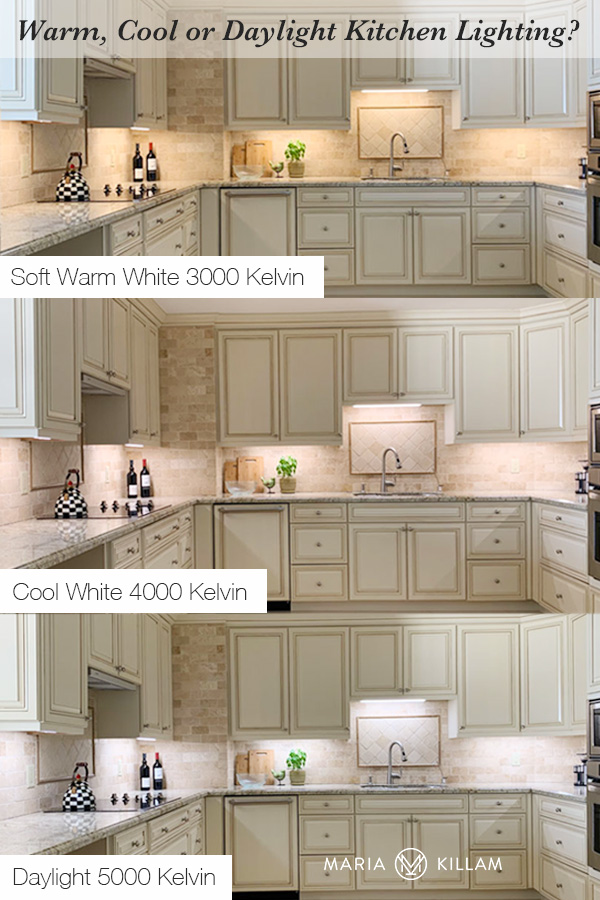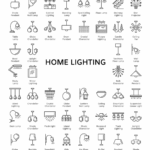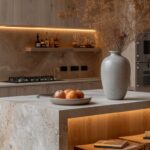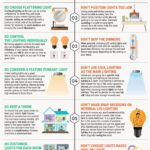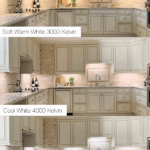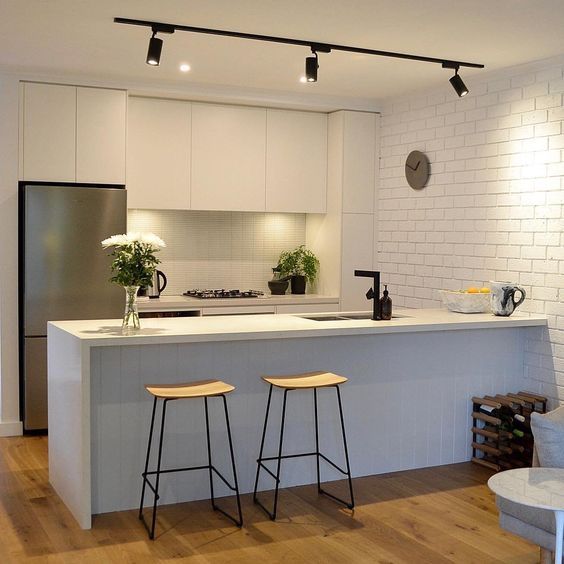
Proper lighting in the kitchen is essential for creating a functional and inviting space. There are three main types of lighting that work together to provide adequate illumination in the kitchen: ambient, task, and accent lighting. Ambient lighting is the general, overall lighting that illuminates the entire room. This can be achieved through ceiling-mounted fixtures, recessed lights, or track lighting. Task lighting is focused on specific areas where tasks are performed, such as over the kitchen island or countertops. Under-cabinet lighting is a popular choice for providing task lighting and can help to reduce shadows while preparing meals. Accent lighting adds an extra layer of illumination and can be used to highlight specific features, such as artwork or architectural details. Pendant lights, sconces, or strip lighting can all be used as accent lighting in the kitchen. When planning the lighting for your kitchen, it’s important to consider the layout of the room, the natural light sources, and the activities that will take place in each area. A well-lit kitchen not only enhances the aesthetics of the space but also improves safety and functionality.
Lighting is an essential aspect of any kitchen design, as it can not only affect the overall ambiance of the space but also its functionality. Proper lighting in the kitchen can make food preparation safer and more efficient, as well as enhance the overall aesthetic appeal of the room. When it comes to lighting the kitchen, there are several key factors to consider, such as the type of lighting fixtures to use, the placement of those fixtures, and the specific lighting requirements for different areas of the kitchen.
One of the most important aspects of lighting the kitchen is choosing the right type of fixtures. There are several options available, including recessed lighting, pendant lights, track lighting, and under-cabinet lighting. Each type of fixture has its own unique advantages and can be used to create different lighting effects in the kitchen. For example, recessed lighting is great for providing overall ambient light, while pendant lights can be used to create a focal point over a kitchen island or dining table. Under-cabinet lighting is perfect for illuminating countertops and workspaces.
In addition to choosing the right type of fixtures, it is also important to consider the placement of the lighting in the kitchen. Task lighting, such as under-cabinet lighting and track lighting, should be strategically placed to provide adequate illumination for food preparation and cooking. Ambient lighting, on the other hand, can be used to create a warm and inviting atmosphere in the kitchen. It is also important to consider the specific lighting needs of different areas of the kitchen, such as the cooking area, dining area, and workspace. By carefully planning the placement of lighting fixtures, homeowners can ensure that their kitchen is both functional and aesthetically pleasing.
Overall, lighting plays a crucial role in the design and functionality of a kitchen. By choosing the right type of fixtures, strategically placing them, and considering the specific lighting needs of different areas of the kitchen, homeowners can create a space that is both beautiful and practical. Whether you are remodeling your kitchen or just looking to update its lighting, taking the time to carefully plan your lighting design can make a big difference in the overall look and feel of the room.
 Decor ideas Style Starts Here
Decor ideas Style Starts Here
